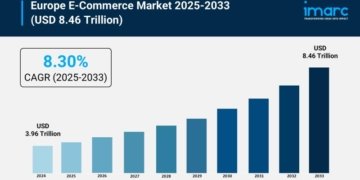Larry Fink Was Right. But Everyone Else Is Getting It Wrong
NEW YORK, NY, October 08, 2025 /24-7PressRelease/ — The tokenization gold rush is here. Unfortunately, nobody brought a map.
The word “tokenization” is having a moment.
Larry Fink, CEO of BlackRock, dropped it into earnings calls and Bloomberg interviews like it was a secret weapon. And just like that, it became gospel. Conferences now have entire panels dedicated to real-world assets (RWAs). Slide decks are stuffed with “fractionalization of everything” diagrams. The vibe? This is the thing that makes crypto real. This is how we win.
Except… it’s not. Not yet.
Because while the narrative is strong, the execution is messy and borderline incoherent.
Tokenize First, Think Later
Let’s be clear: the concept of tokenization is smart. The promise of taking traditionally illiquid or high-barrier assets (think real estate, private credit, art, commodities) and putting them on-chain is enticing. It’s everything crypto has always claimed to be: more open, more transparent, more efficient.
But in practice, most projects are just creating glossy front ends for assets nobody asked to trade on-chain. We’re getting “tokenized fine wine” before we have a stable, liquid market for actual treasury bonds. Platforms are racing to tokenize yachts before they’ve figured out who holds the lien if a DAO stops paying dock fees.
It’s like building a stock exchange before inventing the stock.
TradFi Wants Pipes, Not Pandemonium
Fink wasn’t talking about JPEGs. He was talking about infrastructure; permissioned blockchains, controlled issuance, backend interoperability, automated settlement. The boring stuff. The rails.
But the crypto crowd heard “Larry likes tokenization” and immediately started trying to put Picasso ownership on Arbitrum.
The result? A disjointed ecosystem of niche projects with no unified standard, no cross-chain liquidity, and very few users who actually understand what they’re buying.
Tokenizing real-world assets is hard. Not because of the tech, but because of the regulation, the custody, the compliance, and the sheer messiness of the analog world.
There’s no oracle for who owns your mortgage. Yet.
When Builders Chase Headlines Instead of Problems
Tokenization has become a buzzword-shaped shield. Projects that once claimed to be “Web3 banking solutions” or “DeFi infrastructure” are now pivoting to “real-world asset platforms” overnight.
It’s not just a pivot. It’s a rebrand to chase institutional attention.
Robert Leshner, founder of Compound and now Superstate, is at least trying to build within the system, offering a U.S. Treasury fund wrapped in an Ethereum shell, marketed to institutions. It’s clean, legal, and boring.
Meanwhile, some Layer 1 founders are promising synthetic real estate on Mars.
Where This Goes (If It Goes Anywhere)
Tokenization won’t take off because of vibes. It’ll take off because TradFi institutions like BlackRock, Fidelity, and Citi figure out how to make it boring enough to scale.
We need standards. Custodianship. Clear legal frameworks. Asset servicing. Audits.
Until then, “tokenization” is mostly just a story the industry tells itself, one where crypto finally becomes the infrastructure layer for everything, and institutions finally realize we were right all along.
It’s a good story. But the market needs more than that.
Because until tokenization solves real problems for real participants. This isn’t the future of finance. It’s just expensive branding for bad ideas in prettier wrappers.
# # #















